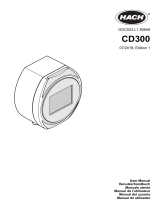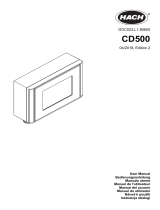
Table of contents
Specifications on page 3
General information on page 3
Installation on page 5
Configuration on page 13
Specifications
Specifications are subject to change without notice.
Specification Details
Current 23 mA maximum
Linearity ± 0.05% of span
Loop resistance 12–18 VDC power supply: 0–250 Ω; 18–24 VDC power supply: 250–500 Ω
Wiring Wire gauge: 0.08 to 1.5 mm
2
(28 to 16 AWG) with an insulation rating of 300 VAC or
higher
1
Operating temperature -20 to 60 °C (-4 to 140 °F); 95% relative humidity, non-condensing
Storage temperature -20 to 70 °C (-4 to 158 °F); 95% relative humidity, non-condensing
Certification Listed for use with the SC4200c controller in Class 1, Division 2, Group A, B, C and D,
Zone 2, Group IIC hazardous locations to FM and CSA safety standards by ETL
General information
In no event will the manufacturer be liable for direct, indirect, special, incidental or consequential
damages resulting from any defect or omission in this manual. The manufacturer reserves the right to
make changes in this manual and the products it describes at any time, without notice or obligation.
Revised editions are found on the manufacturer’s website.
Safety information
N O T I C E
The manufacturer is not responsible for any damages due to misapplication or misuse of this product including,
without limitation, direct, incidental and consequential damages, and disclaims such damages to the full extent
permitted under applicable law. The user is solely responsible to identify critical application risks and install
appropriate mechanisms to protect processes during a possible equipment malfunction.
Please read this entire manual before unpacking, setting up or operating this equipment. Pay
attention to all danger and caution statements. Failure to do so could result in serious injury to the
operator or damage to the equipment.
Make sure that the protection provided by this equipment is not impaired. Do not use or install this
equipment in any manner other than that specified in this manual.
Use of hazard information
D A N G E R
Indicates a potentially or imminently hazardous situation which, if not avoided, will result in death or serious injury.
1
Do not use wire gauge other than 0.08 to 1.5 mm
2
(28 to 16 AWG), unless wires can be isolated
from mains power and relay circuits.
English 3





















